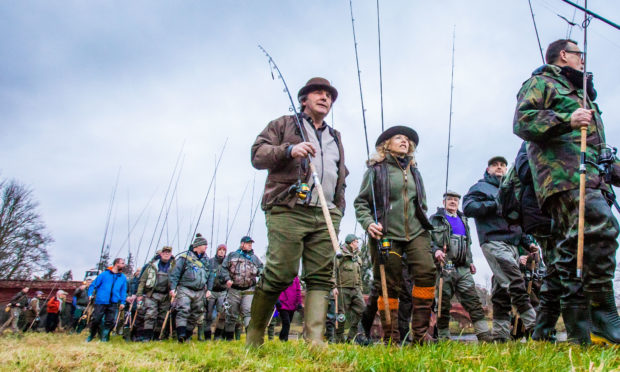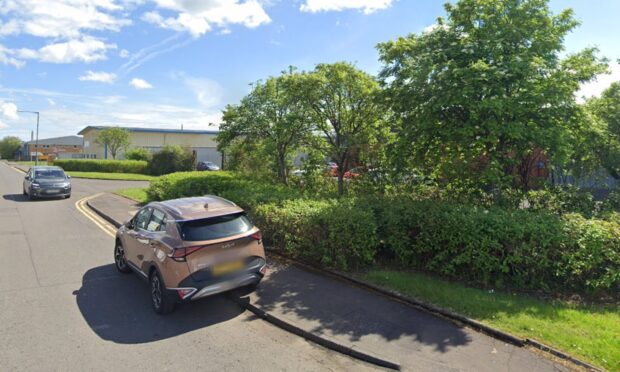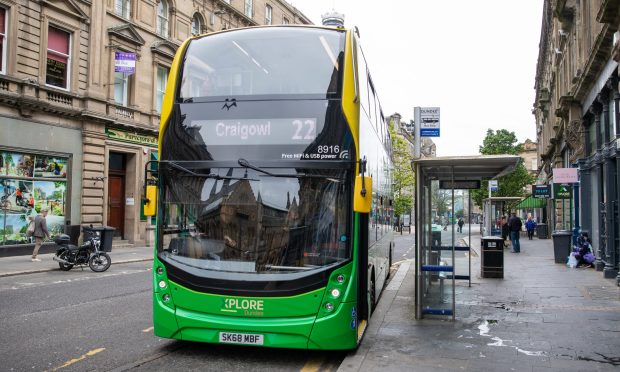Madam, – I attended the traditional opening of the Tay salmon season at Meikleour and enjoyed a happy occasion.
At this event, and others, I noted that the Tay District Salmon Fisheries Board chairman and the director blame problems at sea for the paucity of salmon in our rivers (‘Tight line’ celebrations launch salmon season on River Tay, Courier, January 16).
As a serving board member, may I suggest that the primary problem lies much closer to home.
For years we have been losing huge nunbers of salmon parr and migrating smolts within our district.
The causes vary but include water abstraction, unscreened hydro turbines and predation.
The fisheries board’s mandate is to protect, preserve and improve salmonid stocks within our district, not the North Atlantic!
Over many years the lack of juveniles in many of our burns and rivers has been observed first hand by trout, grayling and salmon anglers along with ghillies and owners.
Over many decades our collective observations have been treated with contempt by the scientific community as they have proceeded to overwhelm common sense with faulty data.
Millions of pounds of hard-earned cash from anglers and proprietors has been squandered in the name of science.
The DNA of a salmon parr is not relevant when the little fish is eaten by a pike, cormorant or mutilated by a turbine.
Enough! It is time to return to the pragmatic approach of the past which proved so successful.
Michael C. Smith,
Threapmuir Farm,
Cleish,
Kinross.
End of line for new rail plans
Madam, – Although I am a railway buff who recalls going by rail to Forfar and has used trains on six continents, I disagree that there is a case for restoring these in Angus or anywhere else.
Rural/branch railways existed to carry freight with passenger services accounting for only 10% of their income.
Freight is now carried far more quickly and cheaply by road.
In USA, Canada, Mexico, Turkey, Argentina, Australia and New Zealand passenger train routes have been reduced by 80%, and no new ones built since 1900.
It is wrong to assume that new railways would greatly reduce car use.
Having to go to one station and then from another by road costs time and money. Most trips would still be by car.
Only 30% of people often use trains and these tend to be the more affluent.
The vast majority of public trips are by bus yet the subsidies paid for the latter are far smaller than for trains.
When roads are not maintained and essential public services are slashed to spend money on new railways, which are hugely expensive to build and maintain and which only a minority would often use, would be irresponsible in the extreme.
Moreover, local transport is the responsibility of councils.
If they want new railways they should pay for them. There is no reason why people in Dundee, Fife and Perthshire let alone Inverness, Glasgow, Aberdeen etc, should fund new routes in Angus or vice versa.
The Borders railway should have been paid for by the three councils in which is located.
MSPs made a gigantic error in agreeing to fund it. Contrary to professional advice I doubt over 1% of people living outside its area have ever used it.
No national funds should be provided for any extensions.
The Borders has already had far more of its share of these.
John Munro,
68 Buccleuch St,
Glasgow.
Spring date for general election
Madam, – Does Labour leader Jeremy Corbyn’s plea for a general election over the Brexit issue have any credibility (Backbenchers urged by Corbyn not to ‘engage’, Courier, January 18)?
I would say have one on May 9, after we have left the EU in late March.
Britain may have left with a deal or without.
In either case the government here and the EU governments will have decisions to make.
It would need clear, strong administration from a regime with a strong mandate to see the country through a difficult period.
A general election in the next few weeks, however, would create nothing but bewilderment among an already fed up electorate.
It is not even clear where either of the two main parties stand on Brexit.
PM May, to say the least of it, has problems within her own party.
And every time I see a Labour spokesperson on television I become more perplexed about where the party stands.
All energies at the moment should be focused on either getting a deal with the EU and what might happen if there is no deal.
Putting the matter back to the voters in another referendum is both a cop-out and the way to more disillusionment.
Mr Corbyn could play a constructive role in talking to the PM and other parties to see how that disillusionment can be overcome and how Brexit can happen in an orderly fashion.
Bob Taylor,
24 Shiel Court,
Glenrothes.
Ball should be in EU’s court
Madam, – Article 50 of the European Union states that “any member state may decide to withdraw from the Union in accordance with its own constitutional requirements”.
If this is all that is written it appears to me that the founding fathers of the EU did not expect that any country would wish to withdraw.
A simple contract such as a hire purchase agreement has explicit details of proceedings to terminate the contract before the due date.
Section 50 implies that the UK should set out its constitutional requirements and advise the EU what they are.
Thereafter in my opinion, it is up to the EU to decide what they make of the situation.
Allan Bullions,
6 Glencairn Crescent,
Leven.
Lib Dems played role in UK crisis
Madam, – Liberal Democrat councillor Fraser Macpherson tries to take the morale high ground in your article “Punch and Judy spat blasted by councillor”, (Courier, January 15).
Indeed he goes so far as to state “there is nothing to be gained from council meetings degenerating into a party political hustings.”
How very noble, until he goes on to launch his own party political hustings in the very next paragraph by stating it is “self-evident” the Scottish Government is to blame!
What is undeniably self-evident is Mr Macpherson’s party allowed the Tories back into power in 2010.
Since then there has been nearly a decade of austerity.
Of course, this policy was given all the impetus it needed when George Osborne became chancellor and found a note from his Labour predecessor which stated, “I’m afraid there is no money.”
Since then, Westminster has cut Scotland’s budget on every measure.
In layman’s terms, Scotland hands over its wages and gets pocket money in return.
With Tory welfare cuts biting deeper and the Scottish Government and local authorities being left to pick up the pieces it is no wonder money is tight.
But Mr Macpherson does himself little credit by ignoring his party’s role in the current crisis.
Henry Malcolm,
331 Clepington Road,
Dundee.










